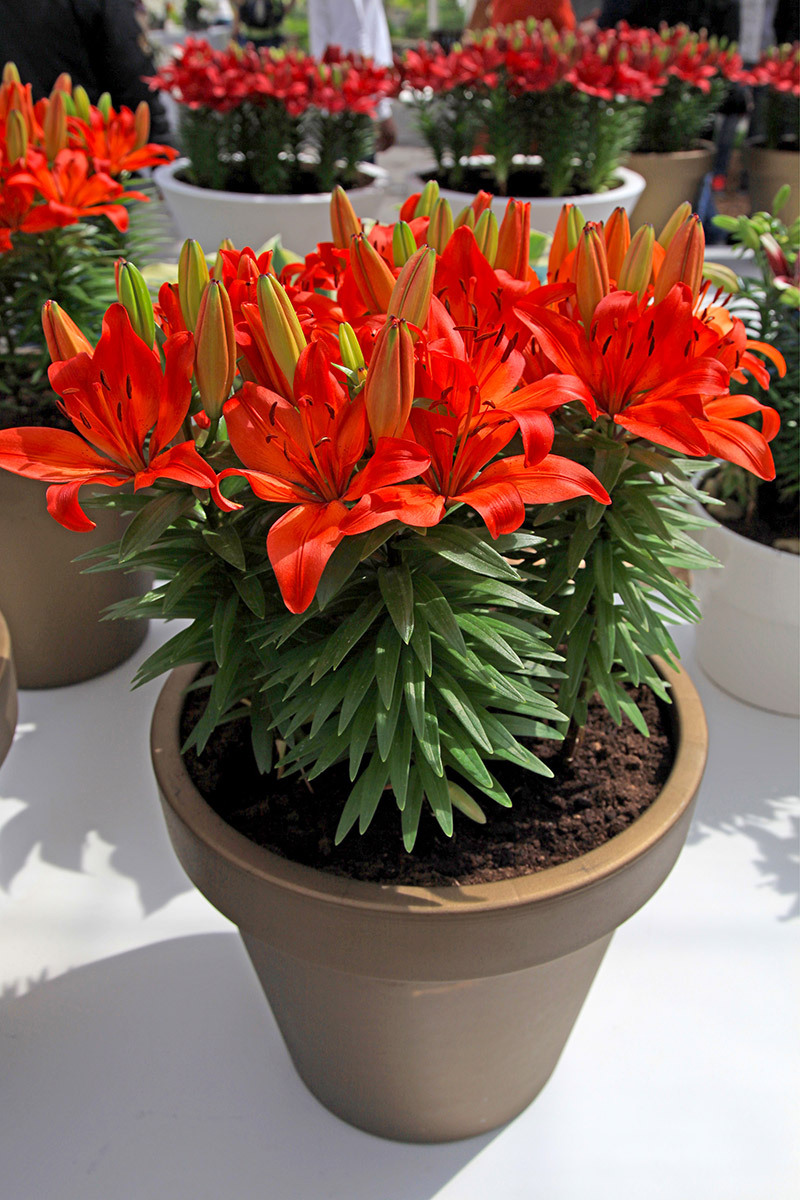Your Step-by-Step Orchid Maintenance Handbook
Orchids are among the most captivating and exotic flowers you can grow at home. Their unique blooms and endless varieties make them a favorite for both beginners and experienced gardeners. However, proper orchid care is essential to ensure your plants thrive and reward you with stunning displays year after year. This comprehensive guide, Your Step-by-Step Orchid Maintenance Handbook, brings together the latest expert advice to make sure your orchids flourish, whether you're new to these remarkable plants or looking to hone your skills.
Why Orchids Make Amazing Houseplants
Orchids are not just beautiful--they are also practical additions to your home. With builds available for nearly any environment and hundreds of varieties to choose from, orchids offer
- Long-lasting flowers that can bloom for weeks or months
- Air-purifying properties to enhance indoor air quality
- Minimal space requirements compared to other houseplants
- The ability to adapt to various home growing conditions
Whether you prefer Phalaenopsis (moth orchids), Cattleya, or more unusual types, there's an orchid maintenance routine to suit every level.

Understanding Orchid Basics: What You Need to Know
Before diving into a step-by-step orchid maintenance guide, it's essential to familiarize yourself with the plant's basic needs and unique attributes.
Orchid Anatomy
- Roots: Most orchids have thick, fleshy aerial roots that absorb water and nutrients from the air or medium.
- Leaves: Usually thick and leathery, leaves help in moisture retention and energy storage.
- Flowers: The most recognizable part, varying widely in shape and color.
- Pseudobulbs: Swollen stem sections in some orchid types, used for water and nutrient storage.
The Importance of Orchid Species
Many orchid species exist, but the most common home-grown are Phalaenopsis, Dendrobium, Cattleya, Oncidium, and Cymbidium. Each has particular light, growth medium, and watering needs. Always identify your orchid type for more tailored maintenance.
Step 1: Choosing the Right Orchid Variety for Your Space
Variety selection is crucial to successful orchid growing. Some orchids are more forgiving, while others require precise conditions. If you're a beginner, start with resilient varieties like:
- Phalaenopsis: Widely available, blooms in low light, and is easy to maintain.
- Dendrobium: Tolerates a range of temperatures and blooms repeatedly.
- Cymbidium: Can thrive outdoors or indoors and provides large impressive sprays of flowers.
For smaller spaces or terrariums, mini-orchids or species like Masdevallia offer compact growth habits.
Step 2: Selecting the Perfect Orchid Pot and Potting Medium
The Right Orchid Pot
Unlike typical houseplants, orchids need excellent drainage and airflow for their roots. Consider:
- Plastic slotted pots for better humidity retention
- Clay or terracotta pots to increase airflow and resist rot
- Clear pots allow root visibility for better monitoring
Best Orchid Potting Mediums
Orchid roots must breathe; typical soil kills them. Instead, use:
- Bark chips: Excellent drainage and replicates tree environments
- Sphagnum moss: Retains moisture for species needing more water
- Coconut husk, charcoal, or perlite: Often mixed for ideal drainage and stability
Repot orchids every 1-2 years to refresh the medium and inspect root health.
Step 3: Mastering Watering Techniques for Orchids
Watering is THE most critical part of successful orchid maintenance. Overwatering is the leading cause of orchid health problems--especially root rot.
- Check moisture: Insert your finger or use a moisture meter; water only when the medium is nearly dry.
- Water early in the day: This allows roots to dry by evening, reducing risk of rot.
- Use tepid, non-chlorinated water: Rainwater or distilled is best.
- Avoid leaf crowns: Watering the center of the leaves can cause rot.
For Phalaenopsis orchids, water every 7-10 days. For Cymbidium and Dendrobium, adjust frequency based on the season and environmental factors.
Signs of Improper Watering
- Yellow leaves, mushy roots: Indicates overwatering
- Wrinkled leaves, dry roots: Underwatering
Step 4: Optimizing Light for Orchid Growth
Orchids thrive on bright, indirect light. Too much sun causes leaf burn, too little inhibits blooming.
- East or west-facing windows: Ideal for most orchids
- Filtered sunlight: Use sheer curtains to diffuse harsh rays
- Grow lights: Necessary in rooms with limited natural light
Phalaenopsis orchids prefer lower light, while Cattleya need brighter conditions. Monitor leaf color:
- Lush green leaves: Not enough light
- Light green leaves: Optimal light
- Yellow/red spots: Too much sun exposure
Step 5: Providing Proper Temperature and Humidity
Ideal Temperature Range
Maintain a temperature between 60-80?F (15-27?C) for most orchid varieties. Many types prefer a slight nighttime drop, which signals the plant to bloom.
Humidity Guidelines
- 50-70% humidity is best for most orchids
- Humidity trays, grouping plants, or room humidifiers help maintain optimal levels
- Avoid misting leaves directly, which can promote fungal problems
Use a hygrometer to measure indoor humidity and adjust as needed.
Step 6: Fertilizing Your Orchids for Healthy Growth
Orchids need nutrients to produce leaves, roots, and spectacular blooms. Apply a balanced orchid fertilizer such as 20-20-20 or a specialized orchid blend. Remember the basic rule:
- Fertilize "weakly, weekly": Use quarter-strength fertilizer every week during active growth.
- Flush the pot monthly: Run clear water through the pot to prevent salt buildup.
- Reduce feeding in winter: Growth slows down and excessive nutrition can harm the roots.
Never apply fertilizer to dry roots--always water thoroughly first.
Step 7: Repotting Orchids the Right Way
Repotting is necessary when the potting medium breaks down, roots outgrow the pot, or to treat disease. Here's your step-by-step guide:
- Remove the orchid carefully from its old pot, teasing roots loose.
- Trim away dead or mushy roots with sterilized scissors.
- Position the orchid in a clean pot with fresh potting mix.
- Support the plant with a stake if top-heavy or if stability is unsure.
- Water lightly and avoid fertilizing for 2-3 weeks to allow roots to heal.
Repot Phalaenopsis orchids every 18-24 months, even if they seem fine--their medium breaks down faster.
Step 8: Encouraging Orchid Blooms and Reblooming
The hallmark of good orchid maintenance is healthy flowering. To encourage reblooming:
- Provide a cool nighttime drop: A fall temperature drop often stimulates blooming.
- Maintain light levels: More light in winter may be necessary for some species.
- Trim dead flower spikes: For Phalaenopsis, cut above the dormant node to prompt a new spike.
- Be patient: Orchids may take months to rebloom after rest.
If your orchid isn't blooming:
- Reassess light and temperature
- Check for root restrictions or poor potting medium
- Evaluate your feeding routine
Step 9: Managing Orchid Pests and Common Problems
Even with the best care, orchids can suffer from pests or diseases. Act quickly if you spot:
- Mealybugs or scale: Remove manually or treat with insecticidal soap
- Fungal problems: Ensure good airflow, keep leaves dry, and use fungicides if needed
- Root rot: Caused by overwatering; remove affected roots and repot in fresh medium
Orchid Maintenance Troubleshooting Table
| Symptom | Possible Cause | Solution |
|---|---|---|
| Yellow leaves | Overwatering or sunburn | Adjust watering, move to indirect light |
| Buds falling off | Sudden temperature changes | Increase temperature stability |
| No flowers | Low light or lack of dormancy | Increase light, provide nighttime temperature drop |
Step 10: Seasonal Orchid Care - Adjusting Your Maintenance Routine
Orchid care changes with the seasons. To keep your plant healthy year-round:
- Spring/Summer: Increase watering, fertilize regularly, watch out for pests.
- Autumn: Gradually reduce water and fertilizer, provide cooler nights.
- Winter: Keep orchids warmer and drier, use supplemental lighting if days are short.
Always adapt your orchid maintenance schedule to your home's microclimate.
Frequently Asked Questions about Orchid Maintenance
- How often should I water my orchid?
Water every 7-10 days or when the medium feels nearly dry. Overwatering is worse than underwatering! - Why are my orchid's leaves turning yellow?
Yellow leaves often signal overwatering, sunburn, or old foliage dropping naturally. - Do orchids need any special soil?
Orchids must have bark, sphagnum moss, or specialized orchid mixes--never regular soil. - How do I make my orchid rebloom?
Provide enough indirect light, a slight nighttime temperature drop, and avoid overfertilizing.

Your Orchid Care Maintenance Checklist
- Daily: Observe your plant for any signs of stress, pests, or dryness
- Weekly: Check soil moisture, water as necessary, fertilize lightly
- Monthly: Inspect roots and leaves, flush potting medium with clear water
- Annually: Repot and refresh the medium, prune if necessary
Conclusion: Growing Orchids with Confidence
Caring for orchids doesn't have to be intimidating. By following this step-by-step orchid maintenance handbook, you'll give your plant the support it needs to produce vigorous roots, glossy leaves, and beautiful blooms year after year. Remember: pay attention to your specific species' requirements, watch for signs of stress, and don't be afraid to adjust your care routine as you learn.
Orchid maintenance is a rewarding experience--stop to appreciate each new leaf, root, and flower along your orchid journey!
Happy Orchid Growing!
For more expert orchid care tips and plant maintenance guides, subscribe to our newsletter or explore our blog for the latest advice.
